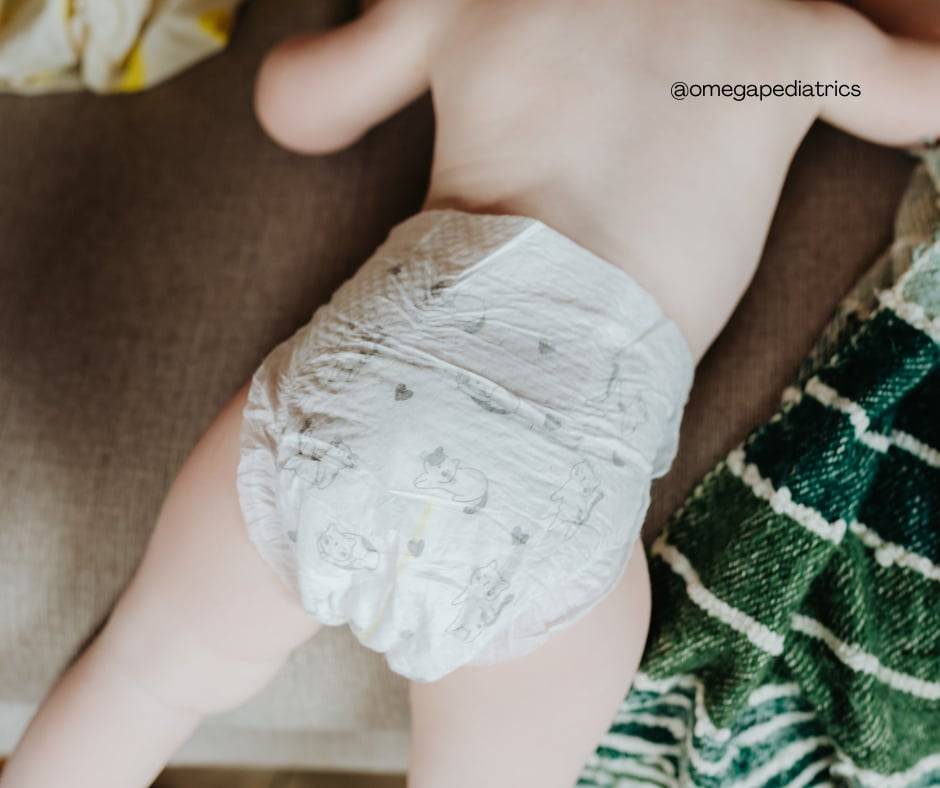Since ancient times, cultures worldwide have valued infant circumcision. It includes the cutting of the foreskin of the newborn’s penis. This has been performed for centuries for medical, cultural, and religious reasons.
This article aims to explore infant circumcision’s history and cultural significance. Examining its origins, prevalence in different cultures, and the debates and controversies surrounding the practice.
Origins of Infant Circumcision
Infant circumcision involves removing the foreskin of the newborn’s penis. It’s a practice performed for centuries that could be associated with numerous cultures. Now, let’s explore the procedure’s cultural significance.

Ancient Origins
The tradition of infant circumcision can be linked to Egypt’s early civilization, dating back as far as 2400 BCE. The Egyptians viewed circumcision as a rite of passage that symbolized purity.
This procedure was also practiced by other ancient civilizations like the Romans as well as multiple African tribes. In numerous societies, circumcision was done to mark a boy’s transition from childhood to adulthood.
Religious Origins
Ancient religions encouraged the ritual of infant circumcision. Jewish beliefs hold that circumcision is a critical element of their covenant with God. It’s also a crucial milestone in the life of a Jewish man.
This ritual dates back to the Bible story of Abraham as well as his self-circumcision. As a symbol of their devotion to God, Jews still practice the ritual. This impactful ceremony is done on the eighth day after the child’s birth and has continued to be a Jewish custom.
Modifications to the Traditional Brit Milah Ceremony
Many Jewish families are choosing to modify the traditional brit milah ceremony, tailoring it to better fit their personal beliefs and preferences.
Hospital Circumcisions
Some families opt to have the circumcision performed at the hospital before leaving. This allows them to separate the medical procedure from the religious celebration. They might still be present during the circumcision and recite the traditional prayer, but prefer a low-key approach for the ritual itself.
Private Circumcisions
Others stick with the traditional timing of eight days but conduct the circumcision privately, followed by a larger public celebration. This keeps the religious significance, while allowing for a more intimate setting during the actual procedure.
Alternative Welcome Ceremonies
A growing number of families decide against circumcising their sons altogether. These families still hold a welcoming ceremony to introduce their child into the Jewish community.
Wrapping in a Tallit
One popular alternative ritual involves wrapping the baby in a tallit (prayer shawl). This tradition, introduced by Rabbi Elyse Wechterman, involves passing the baby in the tallit from one generation to the next. This act symbolizes the transmission of heritage and values, akin to the practice in B’nai Mitzvah rituals where the Torah is passed through the generations.
Awakening the Senses
Another meaningful ceremony includes awakening the baby’s senses. This can involve lighting candles, sipping wine, enjoying aromatic spices, and singing traditional songs. These elements highlight different aspects of Jewish culture and tradition, offering a rich sensory experience for the baby and the family. By adopting these modifications, families create a welcoming environment that aligns with their beliefs while still honoring their cultural and religious heritage.
Jewish circumcision, as depicted in the Torah, is primarily described in Genesis 17:9-14. In this passage, it is commanded that all male members of the Jewish tribe be circumcised as a covenantal sign. This act of circumcision symbolizes their dedication to following God’s teachings and sets them apart from other groups.
According to the Torah, God promises Abraham and his descendants peace and protection in the land of Canaan in exchange for this act of obedience. It is specifically mandated that male infants be circumcised when they are eight days old. This practice is exemplified by Abraham, who circumcised not only himself but also his son Ishmael, who was thirteen at the time.
Key Points of Jewish Circumcision in the Torah
- Covenantal Sign: Circumcision is a physical mark demonstrating the Jewish people’s commitment to God.
- Age Requirement: Male infants must be circumcised at eight days old.
- Historical Example: Abraham and his teenage son Ishmael both underwent circumcision as the initial fulfillment of this command.
This ritual signifies a profound spiritual and communal commitment, linking all Jewish males to their ancestral promises and responsibilities.
What Kind of Meal Follows a Circumcision Ceremony in Judaism?
In Judaism, a circumcision ceremony, known as a brit milah, is typically followed by a special meal called a seudat mitzvah. This meal is important as it is part of fulfilling a mitzvah, or commandment.
What to Expect at a Seudat Mitzvah
- Timing: Since brit milah ceremonies often take place in the morning, the meal tends to be akin to a brunch.
- Food Options: You’ll likely find an array of brunch foods. This can include bagels with various spreads, smoked salmon, eggs, and pastries. Seasonal fruits and salads also make frequent appearances.
- Beverages: Coffee, tea, and possibly wine or champagne are typical beverages served to enhance the celebratory atmosphere.
This meal not only commemorates the religious significance of the ceremony but also nurtures the community feel by bringing together family and friends to share in the joyous occasion.
Islam also incorporates circumcision into its religious practices. It’s believed to have been practiced by the Prophet Muhammad, even though it’s not explicitly mentioned in the Quran. It is considered a cultural norm within Islamic communities.
Muslims generally view circumcision as a way to emulate the actions of the Prophet and promote cleanliness.
In Christianity, infant circumcision wasn’t prevalent since it wasn’t considered a religious obligation. However, some Christian communities, including the Ethiopian Orthodox Church and Protestant groups, practice circumcision as a cultural or traditional custom.
Alternative Ceremonies for Welcoming a Jewish Baby Without Circumcision
Although circumcision is a common tradition in Jewish communities, there are meaningful alternatives to welcome a baby without it. One popular ritual involves wrapping the baby in a Jewish prayer shawl known as a tallit. This practice was introduced by influential leaders and has gained acceptance across various Jewish movements.
Key Rituals Include:
- Passing the Tallit: Families often pass the baby wrapped in a tallit from one generation to the next. This mirrors the B’nai Mitzvah traditions where the Torah is passed down, signifying that the child has a place in the ancestral lineage and will learn from their religious community.
- Symbolic Items Ceremony: Another enriching ritual involves awakening the baby’s senses using candles, wine, spices, and song. These elements connect the child to traditional Jewish experiences and sensory memories.
These ceremonies provide deeply rooted cultural alternatives for families looking to celebrate a new child’s arrival while embracing Jewish heritage.
Contemporary Perspectives
In modern times, the practice of infant circumcision continues for a variety of reasons. Some parents choose circumcision for cultural, aesthetic, or perceived health benefits. Medical studies have indicated potential benefits such as reduced risk of UTIs, STDs, and penile cancer.
Certain medical associations argue that parental preference, informed by thorough research, should determine whether circumcision is necessary.
Worth noting is that attitudes towards circumcision have evolved over time and are still a topic of debate. Individuals and organizations uphold the right to bodily autonomy and are against non-consensual circumcision, while others uphold it due to cultural and religious significance.
Cultural Significance of Infant Circumcision
Infant circumcision holds cultural significance since it symbolizes personal identity and a feeling of belongingness. It is viewed as a fundamental rite of passage in various cultures, signifying a transition into adulthood while declaring loyalty to a specific communal group.
In Judaism, circumcision forms part of the covenant between the Jewish people and God, connecting them to their religious customs and ancestry. It symbolizes a boy’s entrance into adulthood and his inclusion within the community.
Circumcision, or brit milah (also known as bris), is more than just a ritual; it’s a profound tradition that holds deep spiritual and cultural significance. For many Jewish families, this ceremony is a way to honor their faith and heritage, creating a lasting bond between generations.
Modern Perspectives on a Timeless Tradition
Today, the approach to brit milah can vary widely among Jewish families. Some strictly adhere to the traditions as laid out in the Torah, viewing the ceremony as a direct link to their ancestors and an unbroken chain of faith. Others seek to blend these ancient practices with contemporary values, crafting a ceremony that feels both respectful of tradition and relevant to modern life.
Planning and Personalization
Many families engage with rabbis and religious leaders to help plan these significant lifecycle events. This guidance ensures that the ceremony is not only religiously appropriate but also deeply personal. Families may incorporate elements that reflect their unique beliefs and values, making the event a bespoke celebration of their child’s entry into the Jewish community.
Considerations for Families
When welcoming a baby boy into their lives, Jewish families often weigh multiple factors before deciding on circumcision. These considerations include religious obligations, cultural expectations, and personal beliefs. Some may choose a traditional approach, while others might opt for a modified ceremony that aligns more closely with their modern perspectives.
Circumcision is believed to have health and hygiene benefits in several cultures. The practice of circumcision is influenced by the belief that it lessens the likelihood of health concerns like penile cancer, UTIs, and STDs like HIV.
Medical beliefs have considerable influence in areas with increased incidents of these ailments. Moreover, circumcision is linked with better sanitation and cleanliness since the removal of the foreskin affords more efficient maintenance of genital hygiene.
It’s acknowledged that the medical advantages of circumcision provoke discussions and differences depending on the circumstances. The WHO recognizes the advantages but emphasizes that only certified experts should perform the procedure in a secure and sterile setting.
Hospitals and clinics have undergone a transformation toward an intricate approach. They acknowledge the potential benefits while placing emphasis on individual judgment, agreement, and traditional morals.

Prevalence of Infant Circumcision: Global Variations and Changing Trends
Increased Awareness about Personal Autonomy
Infant circumcision has been a tradition in certain regions, including the Middle East. The United States played a major supportive role, which resulted in 70-80% of circumcised babies. Moreover, Saudi Arabia has high rates of circumcision due to religious customs.
However, the infant circumcision rate is low in Asia, South America, and Europe. Attitudes towards the procedure in Finland, Norway, Sweden, and Denmark have undergone changes that have resulted in its decline.
Due to increased awareness about personal autonomy and bodily integrity, the prevalence of circumcision in those countries has gone below 10%.
Changes in Medical Perspective
Medical reasons greatly impact circumcision trends. The AAP, for example, has altered its position on the practice. It states that the benefits aren’t substantial enough to warrant routine circumcision.
This change in medical perspective has influenced parents’ decision-making processes and contributed to a decline in circumcision rates in certain countries.
More Informed Choices
Another factor is the increasing recognition of human rights and individual autonomy. The right to make decisions about their own bodies has gained prominence, leading to the question of the necessity and ethics of non-consensual infant circumcision.
This has sparked debates and discussions, resulting in parents making more informed choices or choosing to forgo circumcision altogether.
Demographic Shifts
With increasing globalization and multiculturalism, societies have become more diverse, incorporating various beliefs and practices. Immigrant populations from countries with low circumcision rates have influenced the prevalence in their new homelands.
Debates and Controversies
Proponents of newborn circumcision argue that it’s a personal decision made by parents in the best interest of their child. They assert that the procedure is safe when performed by trained healthcare professionals.
The potential risks and complications of newborn circumcision are minimal. Moreover, they claim that circumcision could have long-term benefits, like improved hygiene.
However, opponents of infant circumcision highlight several ethical concerns. They argue that the procedure violates a child’s bodily autonomy. A person’s right to make decisions about their own body.
Critics contend that the alleged health benefits of circumcision are frequently overstated. The risks have serious consequences. Nonetheless, they question the necessity of circumcision in countries with access to proper healthcare.
This argues that alternative measures like safe sex practices could be effective in preventing certain diseases.
Religious and cultural factors also contribute to the controversy about infant circumcision. Many communities view it as a sacred ritual or tradition, deeply ingrained in their cultural or religious identity. For them, the practice holds symbolic and social significance.
However, opponents argue that religious beliefs should not override an individual’s right to bodily integrity as well as personal autonomy.
The medical community remains divided on the issue. While several professional organizations suggest that the decision to circumcise should be left to parents. Other organizations discourage the practice. This lack of consensus among medical experts further boosts the ongoing debates.

Health Benefits of Infant Circumcision
Easier Hygiene Maintenance
The removal of the foreskin simplifies genital hygiene for infants. There’s no need to retract and clean under it without the foreskin. This reduces the risk of smegma buildup.
Reduced Risk of Urinary Tract Infections
Multiple studies claim that circumcised infants have a lower risk of developing urinary tract infections compared to uncircumcised infants. Urinary tract infections could lead to kidney problems if left untreated. Thus, circumcision helps prevent such complications.
Decreased Risk of Sexually Transmitted Infections
Research has found that circumcision is associated with a reduced risk of acquiring sexually transmitted infections. The removal of the foreskin eliminates the moist environment that could harbor the transmission of these infections.
Potential Reduction in Prostate Cancer Risk
Studies suggest a correlation between circumcision and a reduced risk of prostate cancer.
Lower Risk of Penile Issues
Circumcision prevents various penile conditions, like phimosis. Phimosis is the inability to retract the foreskin. This condition could cause discomfort and increase the risk of infection. This could be avoided through circumcision.
Cultural Considerations
For families with cultural beliefs that prioritize circumcision, the procedure holds significant importance. It’s seen as a way to honor tradition, reinforce cultural identity, and fulfill cultural obligations.
While the health benefits of infant circumcision are recognized, the procedure involves risks and complications. Thus, it’s essential for parents to consult with healthcare professionals like Omega Pediatrics.
With a productive collaboration with Omega Pediatrics, parents are equipped to weigh the potential benefits against the risks involved. In this way, they have made informed choices in their decision-making toward infant circumcision.
The Past Influences Present-Day Perspective
The cultural, and religious significance of infant circumcision can be traced back thousands of years. This practice has a rich history. It has its roots in religious traditions as well as ancient civilizations.
Nonetheless, there has been a decline in recent years due to the changing outlook as well as ongoing discussions concerning medical implications.
For a holistic approach, Omega Pediatrics’ goal is to educate the parents of their young patients to fully understand the complex topic of infant circumcision. It’s essential to understand its historical background and cultural significance.
An appreciation of the significance of history ensures respectful dialogue and promotes productive discourse in light of modern perspectives.




